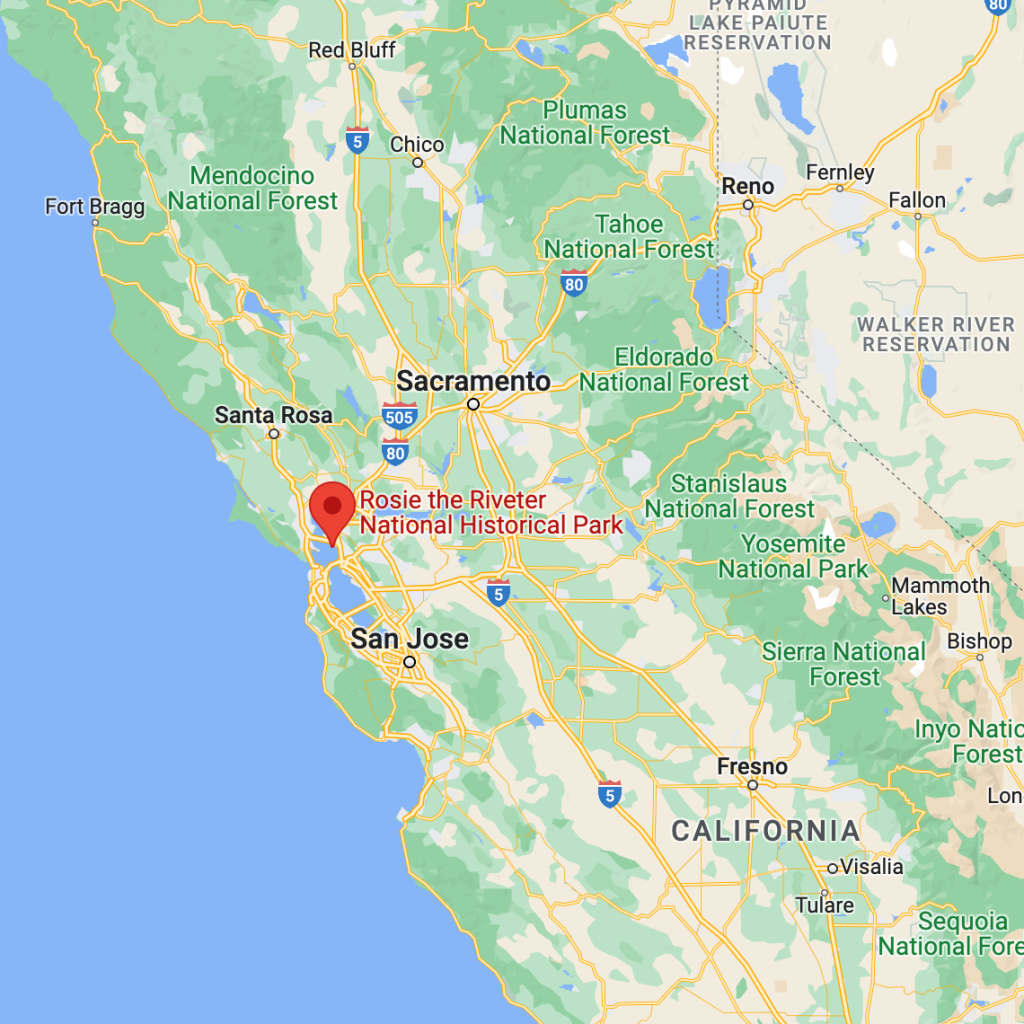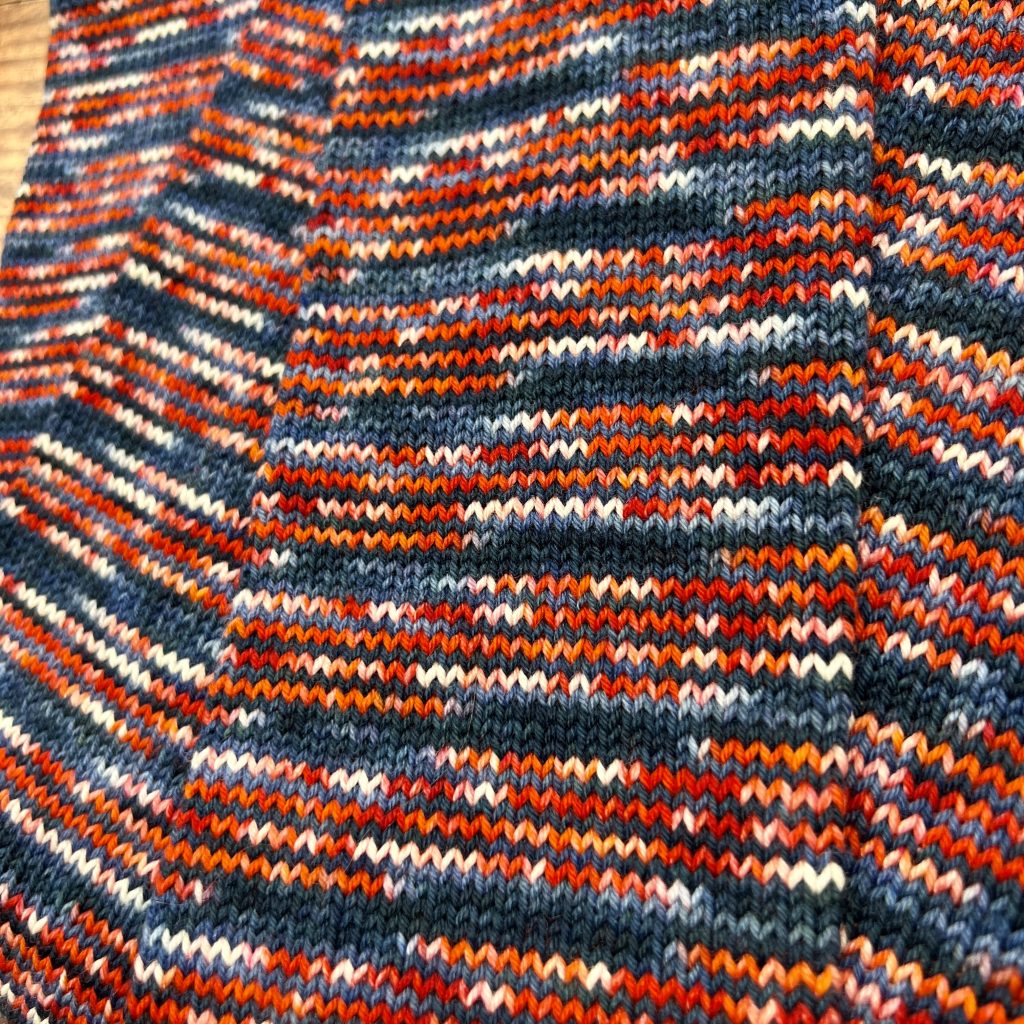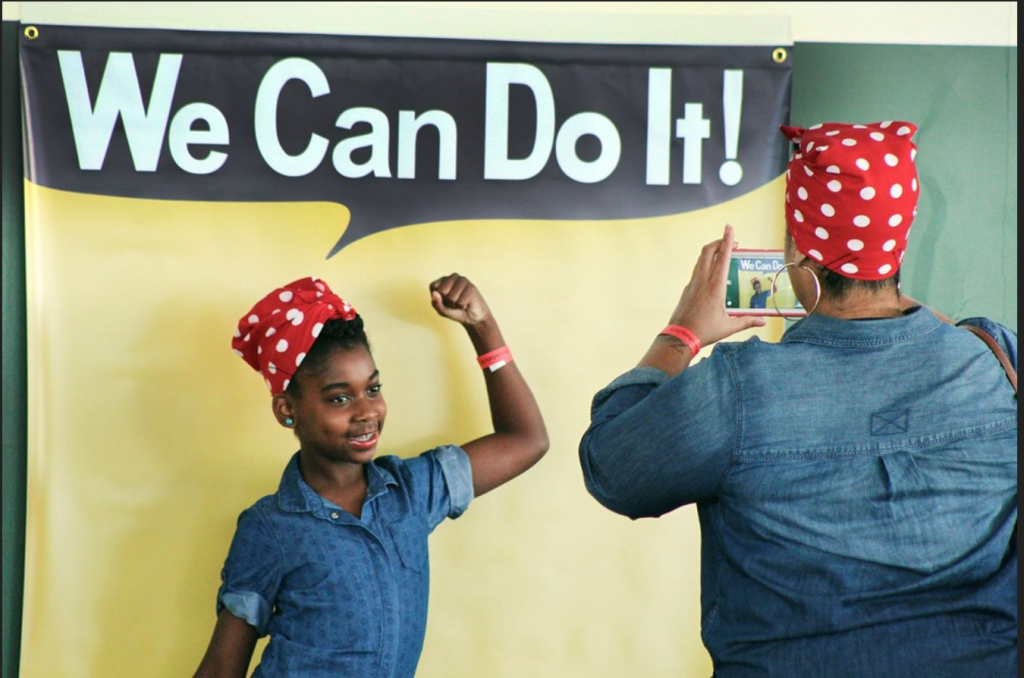It’s time for the annual National Parks Club! Find out information about participating shops, Vacay Bingo, the KAL, and more here.
Where is it located?
Rosie the Riveter World War II Home Front National Historical Park is a United States national historical park located in Richmond, California, near San Francisco.

Whose land does it reside upon?
Ohlones and Coast Miwoks. Native Americans have called the San Francisco Bay region home for over 10,000 years. Park areas south of the Golden Gate, from the San Francisco Peninsula, to the East Bay and south to Monterey, are the aboriginal lands of the Ohlones (also called Costanoans).
When was it established?
January 31, 2001
About this park:
On the morning of December 7, 1941, military forces of the Empire of Japan attacked the United States Naval Fleet and ground bases at Pearl Harbor in Hawaii. On December 8, 1941, one day after the “Day of Infamy,” the United States declared war against the Empire of Japan and on December 11, 1941, Japan’s ally, Germany, declared war on the United States. Ten million Americans, mostly young working age men, would serve in the military during WWII, out of an overall United States population of 113 million. While an unprecedented number of young men would serve in World War II, the country would drastically increase its war production on the Home Front, serving not only the needs of the armed forces of the United States but her allies as well – what President Franklin Roosevelt called “The Arsenal of Democracy.” The combination of so many serving in the military, during a period of necessary and drastic increases in production, led to unprecedented social changes on the American Home Front.
During World War II six million women entered the workforce. “Rosie the Riveter” and her “We Can Do It” motto came to symbolize all women Home Front workers. A shortage of white male workers led to active recruitment, by the United States Government, to war industry jobs. Initially white middle class women were recruited, followed by minority men, and finally minority women. Integration of women and minorities into the workforce was initially met with resistance, however, the new opportunities for women and minorities “cracked open” the door to equal rights and would have profound impacts on the Civil Rights Movement and Women’s Movement during the following decades.
The World War II period resulted in the largest number of people migrating within the United States, in the history of the country. Individuals and families relocated to industrial centers for good paying war jobs, and out of a sense of patriotic duty. Many industrial centers became “boom towns”, growing at phenomenal rates. One example, the City of Richmond, California, grew from a population of under 24,000 to over 100,000 during the war. Workers from around the nation had to intermingle with each other, overcome differences, and form a cohesive identity in order to meet war demands. Following World War II, many migrants decided to stay in their new homes, forever changing the cultural landscape of the United States.
Home Front workers faced many challenges and many of which would lead to change. Working conditions on the Home Front were difficult and dangerous. Between the bombing of Pearl Harbor in December of 1941 and the D-Day Invasion of Europe in June of 1944, there were more Home Front industrial casualties than military casualties. This high number of industrial casualties would lead to improved workplace safety and regulations, as well as better access to affordable health care. Another challenge faced by working women on the Home Front was childcare, as mothers comprised a significant portion of the work force. This led to the establishment of child development centers and the professional field of early childhood development.
In addition to Home Front workers, everyone was expected to be an active participant in the war effort. Rationing was a way of life as twenty commodities were rationed and people were asked to, “Use it up –Wear it out –Make it do –or Do without.” Materials vital to the war effort were collected, often by youth groups, and recycled. Many Americans supported the war effort by purchasing war bonds. Women replaced men in sports leagues, orchestras, and community institutions. Americans grew 60% of the produce they consumed in “Victory Gardens”. The war effort on the United States Home Front was a total effort.




Why did we choose these colors?
We used this photo, of a young girl and her mother dressed as Rosie the Riveter during the 2016 Rosie Rally, as the inspiration for our colorway.

For more information:
NPS website: https://www.nps.gov/rori/index.htm
